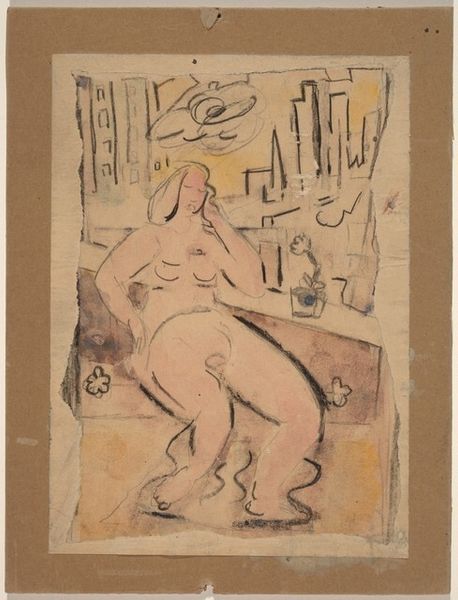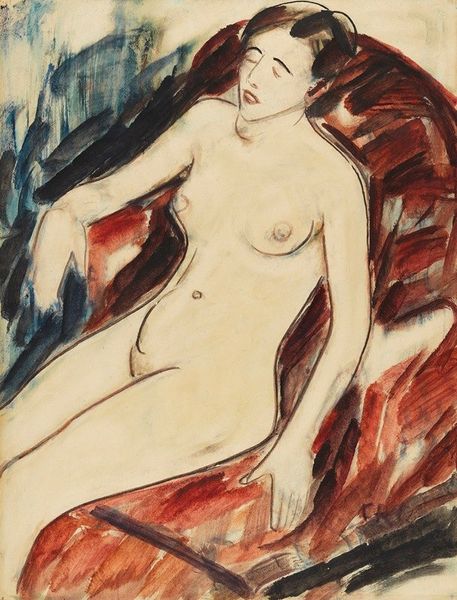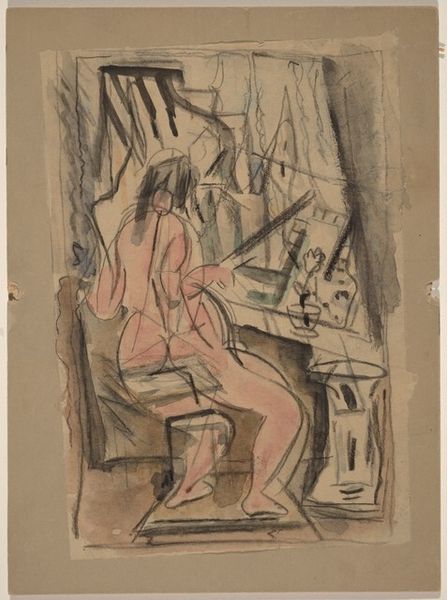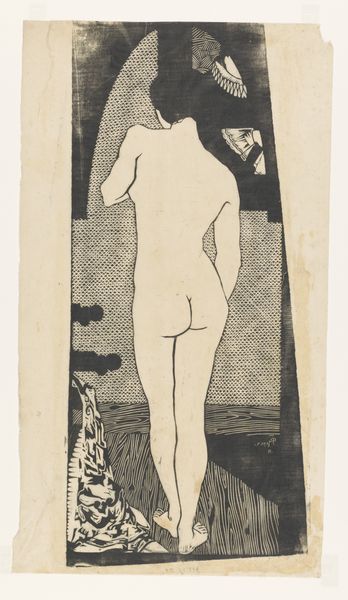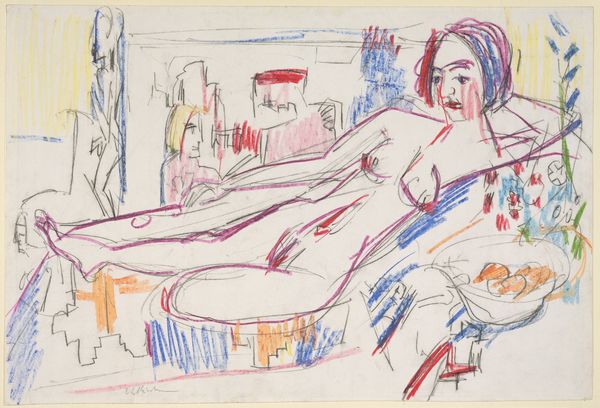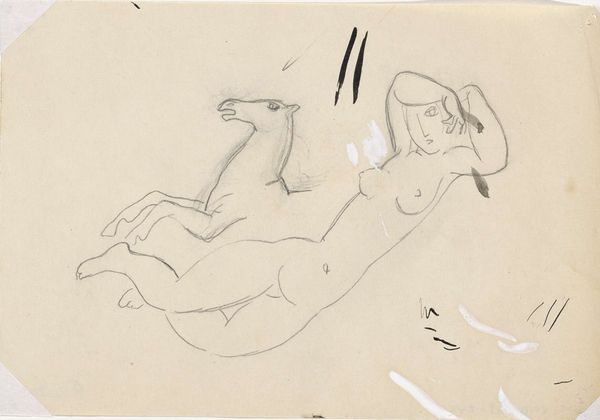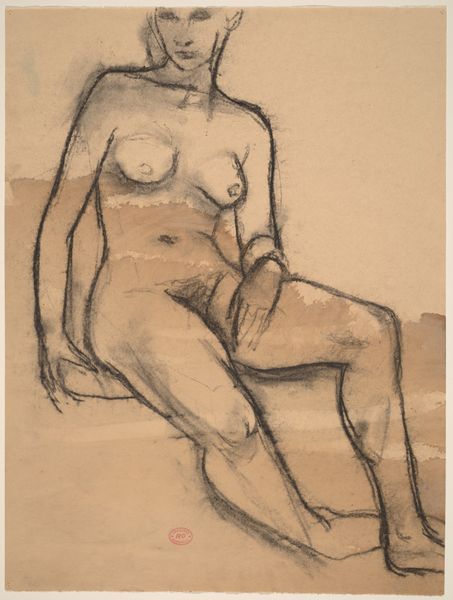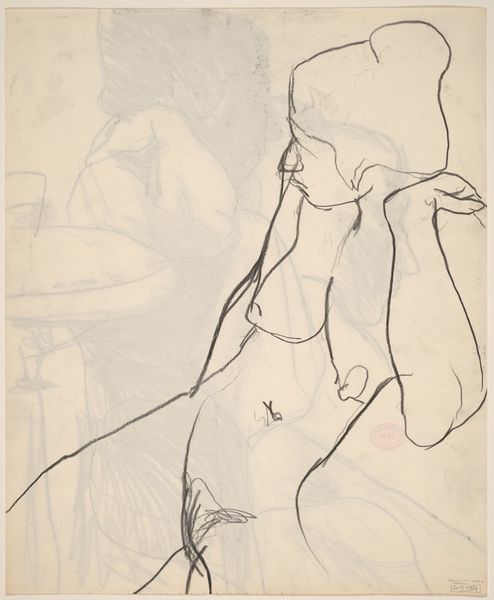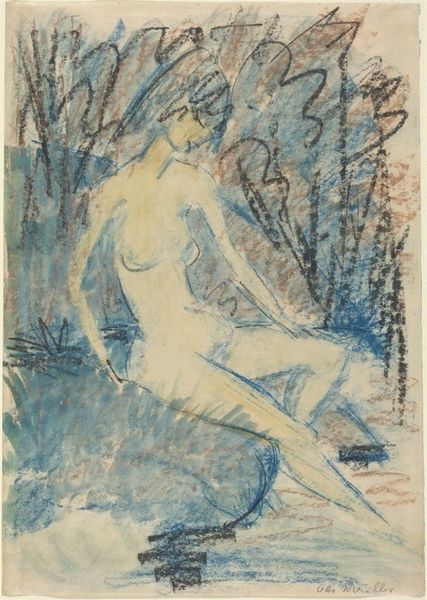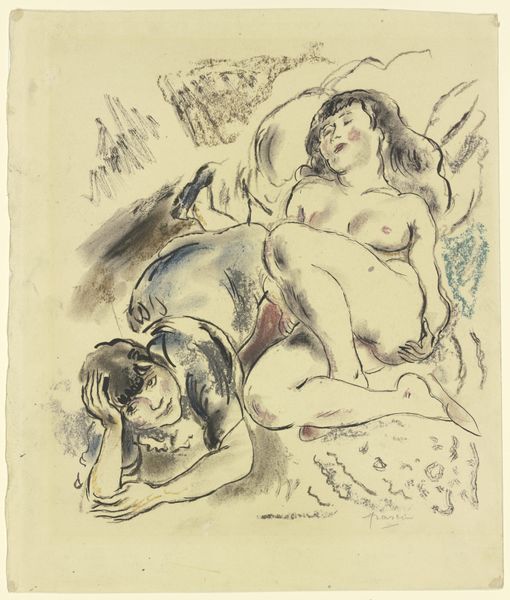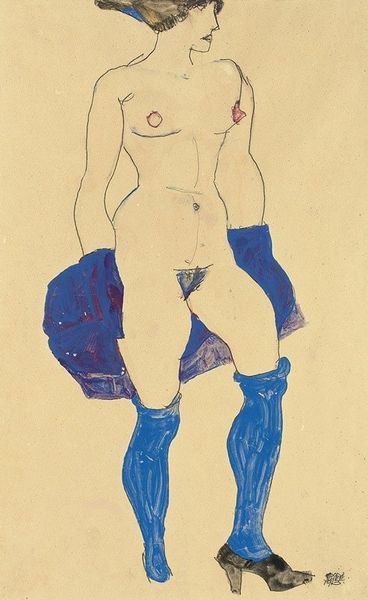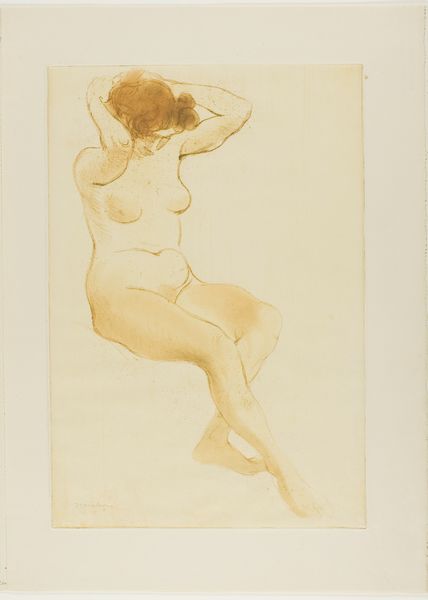
drawing, painting, watercolor
#
portrait
#
drawing
#
water colours
#
painting
#
figuration
#
watercolor
#
nude
#
modernism
#
watercolor
Dimensions: overall (sheet): 16.2 x 12.1 cm (6 3/8 x 4 3/4 in.)
Copyright: National Gallery of Art: CC0 1.0
Editor: Here we have John Marin's "Seated Female Figure" from 1936, a watercolor drawing that captures a nude woman in a domestic setting. The piece feels intimate and a bit unfinished, the lines are so free and expressive. What do you see in this piece, especially considering the time it was made? Curator: It’s fascinating to consider this work within its historical context. The 1930s were a time of great social change, including evolving attitudes toward the representation of the female body in art. Marin, though rooted in modernism, engaged with these changing attitudes. How does the representation of the female body here differ from, say, classical nudes or even the more objectified female figures we see in some earlier modernist works? Editor: I guess it feels less idealized? More…real, somehow. There's a sense of lived experience, rather than just a symbol of beauty. Curator: Exactly. And that rawness, that lack of idealization, becomes a political statement of sorts. Marin seems to be acknowledging the female form not as a perfect ideal, but as a subject with her own presence and subjectivity. This piece challenges the conventional, often male-dominated, gaze in art. Did Marin exhibit frequently? And in what sort of galleries would these have shown? Editor: Yes, Marin's work was often exhibited, in places like Alfred Stieglitz's gallery "An American Place", championing American modernism, so he already was actively placing himself within a modern tradition. Curator: Which is significant. Marin positions himself and this work in dialogue with that cultural and artistic landscape, pushing the boundaries of what's considered acceptable or desirable in public representation. This watercolour, viewed through the lens of social history, provides us with insights into the complexities of gender and representation in American art during this transformative period. Editor: That gives me a lot to think about - the public role of art and the statement being made through the painting, even if unintentional. Thank you. Curator: It's in reflecting on all of this that this watercolor’s subtle commentary reveals itself.
Comments
No comments
Be the first to comment and join the conversation on the ultimate creative platform.
